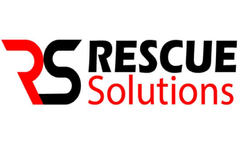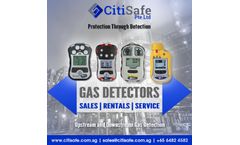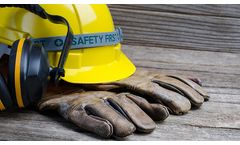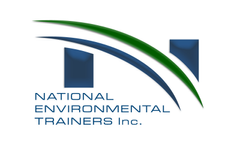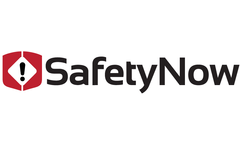personal protective equipment ppe Articles
-
Workplace Falls Get Fresh Attention
The U.S. Occupational Safety and Health Administration (OSHA) is tackling a major source of industrial injuries – slips, trips and falls on workplace surfaces. On May 24, OSHA proposed significant revisions to Subparts D and I of the general industry standards dealing with walking-working surfaces and personal protective equipment (PPE), respectively. This column outlines the reasons why ...
By Acta Group
-
Industrial hygiene case study
Service performed: Industrial hygiene monitoring at a pharmaceutical manufacturing facility Summary: Our environmental staff performed testing and consulting to determine employee exposure levels to hazardous chemicals at a large manufacturing facility. Engineering controls and personal protective equipment were also evaluated for its effectiveness during the manufacturing process of ...
-
Personal protective equipment against nanoparticles
Nanomaterials manufacture and use are in full expansion. With them comes an increasing risk for human health, especially at the workplace. Indeed, the early signs of potential toxicity associated with nanotechnologies are piling up. Even if they must be considered as a last resource in a traditional occupational Health & Safety approach, personal protective equipment (PPE) against nanoparticles ...
-
Largest PPE Shortage Since the Start of the Pandemic: Challenges & Solutions
Personal Protection Equipment Shortages and Raised Prices Shortages in personal protection equipment (PPE) is becoming an issue across the United States. Hospitals in the country are facing severe shortages of masks for their staff and patients. The PPE shortage is becoming more dire as states begin to lift mask mandates – cases are likely to spike again due to the relaxed precautions. ...
-
Using Web-Based Collaboration to improve Job Hazard Analysis
The Occupational Safety and Health Administration (OSHA) requires a hazard analysis of jobs to ensure mitigating controls such as engineering controls, administrative controls and personal protective equipment (PPE) are applied to protect workers from harm. The Departments of Energy, Defense, and Interior have specific standards that require performing hazard analyses. As an Environmental Safety ...
-
How Meco Smartanalytics Supports Critical Manufacturing
Big Data is playing a transformative role in most modern industries, proving to have a significant impact in the water purification sector. While the biopharmaceutical industry is continuing to ramp up production in 2021, especially for the manufacture of Covid-19 related products like vaccines, vials, syringes, and personal protective equipment (PPE), high purity water systems are increasingly ...
-
Monitoring Benzene Exposure for Safety and Health
Monitoring Benzene exposure: Choosing the right solution for safety and health As a common carcinogen found in many industrial applications, there is a need to protect against benzene exposure for workers, the public and the environment. It is essential to choose detection instrumentation that is designed specifically to monitor benzene. Due to its hazardous nature, it is not something that ...
-
10 Essential Confined Space Entry Safety Tips
Confined space entry is a dangerous activity that needs strict safety rules. Employers are responsible for keeping workers safe in confined spaces. They must understand and follow important safety measures. Understanding Confined Space To make a good safety plan, understand confined spaces. They may seem safe, but they can be dangerous for workers. Approach them carefully. To ensure safety ...
-
Emergency PPE Production - Edge Trim Material Handling
In this Material Handling installation, we expedited the development and delivery of two fans for emergency production of Personal Protective Equipment (PPE), specifically medical masks, to help meet increased demand during the Covid-19 pandemic. These material handling fans were among the first to ship with our new Gold Standard Warranty, which guarantees reliability for 3 years on every ...
-
Proper Cleaning of Gas Detector Instrument
This guidance provides recommendations on the cleaning and disinfection of Gas Detector equipment. We recommend you use personal protective equipment (PPE) when operating and cleaning your instrument to help reduce risk of infection and contact with viruses.Approved cleaning methods are as follows:Instrument should be powered off when cleaning. Dampen a soft or disposable cloth and clean all ...
-
4 ways to create a safe work environment for electrical engineers
Creating a safe environment for electrical engineers is crucial, as electrical work can be dangerous. Without proper equipment or safety measures, technicians could suffer electrical shocks, which could cause burns, nerve damage, loss of consciousness, or cardiac arrest. Hazards like fires and explosions can also cause property damage, which isn’t ideal when you’re working on projects for ...
-
Safety Stand-Down Puts Safety First
An unfortunate event resulting especially from carelessness or ignorance” or “an unforeseen and unplanned event or circumstance” is how merriam-webster.com defines an accident. No one plans an accident. You don’t leave your house in anticipation of a fender bender; nor do jobsite and workplace accidents schedule a time — they happen. Unfortunately, you can be doing ...
By CETCO
-
What is HAZWOPER 40?
HAZWOPER 40 is a requirement by the Occupational Safety and Health Administration (OSHA) for Hazardous Waste Operations and Emergency Response (HAZWOPER) training. OSHA requirements are found in their regulations in 29 CFR 1910.120. They specifically listed HAZWOPER 40 as a particular training requirement for workers conducting clean up operations at hazardous waste sites. HAZWOPER 40 is the ...
-
Ensure the Safety of your Workers During Confined Space Entry
Confined space entry is a specialized operation that requires exceptional attention to safety. This area has limited ways to get in and out, the air might be dangerous, and it’s not made for workers to stay there all the time. Confined space entry inherently unfurls a variety of safety risks. To enhance safety and reduce risks, it is important to: Implement a strong and clear safety ...
-
What Is Occupational Health?
So who determines whether a particular chemical, microbe, or particulate is likely to hurt a worker who is exposed during the course of his or her work activities? Enter the Industrial Hygienist, also referred to as an Occupational Health Specialist or Occupational Hygienist. People engaged in manufacturing, the folks who make the products we all use every day, are exposed to a wide variety of ...
-
Construction Site Safety Inspections – What To Include at the Start of the Project?
There are TWO TIERS of safety inspections regardless of the type of construction project – road, building waterway, hazardous waste clean-up. First Tier – Initial Site Inspection at the Start of the Project. This inspection is more of a Program Audit than a site safety inspection and is best performed at the very start of the site work – even before work if possible!! The ...
-
Protect Your Respiratory System
The air around you keeps you alive. But in certain circumstances, it can cause you serious injury, illness or death. To stay alive and healthy, you need air which is clean, free of toxic gases and other contaminants, and contains the right amount of oxygen. Most of the time, the air around you at home, on the street and at work fills the bill. But under certain circumstances, the air contains ...
By SafetyNow
-
New Trend: Fidget Spinners
What EHS legal requirements does a fidget spinner manufacturer need to comply with? Well, this question alone can be broken down into several further questions: What EHS regulatory requirements will impact the fidget spinner as a Product? At the design stage? What chemicals or other component ingredients can (or should) we use? Which substances can I definitely NOT use (now or in the ...
-
Are Fume Hoods Necessary?
A fume hood is an important part of any laboratory that works with harmful particles, vapors, or chemicals. Fume hoods limit exposure to toxic gasses by pushing the contaminated air outside or filtering the particles through a filter and recirculating clean back into the laboratory. Fume hoods include an enclosed work area behind a clear sliding window, also known as a sash. The sash window ...
-
Chemical Safety in Laboratories: Best Practices for Handling and Storage to Ensure Personnel Safety and Prevent Accidents
Chemicals are essential in any laboratory. They help to power groundbreaking discoveries, advances in science, and research that drives innovation. But with great power comes great responsibility, and it’s essential to handle these substances with care. Improper handling and storage of chemicals can lead to accidents, harmful exposure, and dangerous reactions. This can not only endanger the ...
Need help finding the right suppliers? Try XPRT Sourcing. Let the XPRTs do the work for you



